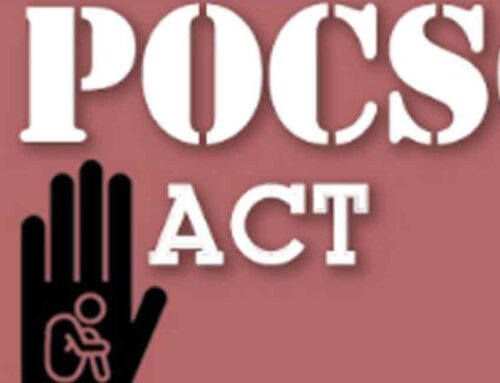– Abul Kalam Azad Sulthan, Advocate, High Court of Judicature at Madras and Madurai Bench of Madras High Court & Partner, Spicy Law Firm.
Many of you may wonder about the effectiveness of Public Sector Banks in recovering debts using the SARFAESI Act. This insightful analysis will explore into the challenges faced by public sector banks, the success rates achieved, and the impact of this act on the banking sector. By the end of this article, you will have a clearer understanding of whether public sector banks are truly able to recover debts efficiently with the SARFAESI Act.
Key Takeaways:
- Effective tool: The SARFAESI Act has proven to be an effective tool for public sector banks in recovering debts from defaulting borrowers.
- Streamlined process: The Act provides a streamlined process for banks to enforce their security interest without the need for court intervention, thus expediting the recovery process.
- Challenges exist: Despite its advantages, public sector banks still face challenges in recovering debts under the SARFAESI Act, such as delays in implementation and legal hurdles.
The SARFAESI Act: A Game-Changer for Debt Recovery
Overview of the Act
For public sector banks looking to recover debts efficiently, the Securitisation and Reconstruction of Financial Assets and Enforcement of Security Interest (SARFAESI) Act has been a game-changer. Enacted in 2002, the SARFAESI Act empowers banks to take possession of collateral and sell it without court intervention to speed up the recovery process. The Act applies to non-performing assets (NPAs) above a certain threshold, providing banks with a powerful tool to tackle bad loans effectively.
Key Provisions and Amendments
Any public sector bank facing challenges in debt recovery should familiarize itself with the key provisions of the SARFAESI Act. The Act allows banks to issue a notice to the borrower to repay the debt within 60 days, failing which the bank can take possession of the secured assets. Moreover, with the 2004 amendment, the Act now covers security receipts, making it easier for banks to securitize assets and recover debts. Additionally, the 2016 amendment further strengthened the Act by enhancing the rights of the secured creditors.
Provisions such as the right to take possession of assets without court intervention and the ability to sell assets quickly make the SARFAESI Act a potent tool for public sector banks in debt recovery. By streamlining the recovery process and reducing the burden on the courts, the Act enables banks to expedite the resolution of NPAs and improve their financial health. However, it’s necessary for banks to exercise caution and follow the procedures outlined in the Act diligently to ensure a fair and transparent debt recovery process.
Public Sector Banks’ Experience with SARFAESI
Some banks faced initial hiccups and challenges when implementing the SARFAESI Act. The introduction of this act brought a significant shift in the traditional debt recovery process for public sector banks. Many banks struggled with understanding the intricacies of the new legislation and adapting their strategies accordingly. The process of seizing and auctioning off assets was novel for many, leading to confusion and delays in loan recovery. Resistance from defaulting borrowers and legal roadblocks further complicated the process for banks. However, with time and experience, most banks have learned to navigate these challenges more efficiently.
Success Stories and Turnarounds
Turnarounds in debt recovery have been observed amongst public sector banks after the successful implementation of the SARFAESI Act. Banks have reported instances where they were able to swiftly recover dues by taking possession of mortgaged assets and selling them off. This newfound power of enforcement has instilled a sense of fear among defaulters, leading to a significant increase in timely loan repayments. Banks have also witnessed a change in borrower behavior, with many becoming more cooperative once they realize the consequences of defaulting under the SARFAESI Act.
Plus, the SARFAESI Act has empowered public sector banks with a robust tool for debt recovery. The act provides banks with the necessary legal framework to expedite the recovery process and minimize losses. By streamlining the enforcement mechanism, banks can now act decisively against non-performing assets, ensuring a healthier loan portfolio. Additionally, the act has instilled discipline among borrowers, encouraging them to honor their repayment commitments to avoid the severe consequences outlined in the legislation.
Factors Influencing Debt Recovery Success
Unlike traditional methods, the SARFAESI Act provides public sector banks with a powerful tool to recover debts efficiently. However, the success of debt recovery efforts under this act depends on various factors. Here are some key factors that can influence the success of recovering debts:
- Effective Implementation and Enforcement: The successful implementation and enforcement of the SARFAESI Act are crucial for debt recovery. This includes timely initiation of proceedings, proper valuation of assets, and swift action against defaulting borrowers. It is vital for banks to have a robust mechanism in place to ensure compliance with the provisions of the act and to expedite the recovery process.
- Cooperation between Banks and Borrowers: Collaboration between banks and borrowers can also play a significant role in debt recovery success. When borrowers are willing to cooperate with banks and adhere to repayment schedules, the chances of recovering debts increase. Building a positive relationship based on trust and communication can lead to better outcomes for both parties involved.
Effective Implementation and Enforcement
Success in debt recovery under the SARFAESI Act largely depends on the effective implementation and enforcement of its provisions. Banks need to ensure that they have the necessary infrastructure and resources to carry out the process efficiently. By rigorously following the guidelines set out in the act and taking prompt action against defaulting borrowers, banks can improve their chances of successful debt recovery. Perceiving non-compliance with the act can result in delays and hinder the overall recovery process.
Cooperation between Banks and Borrowers
With cooperation between banks and borrowers, the debt recovery process can be significantly expedited. When borrowers engage positively with banks, provide required information promptly, and adhere to repayment arrangements, the likelihood of successful debt recovery increases. By fostering a cooperative environment and maintaining open lines of communication, both parties can work towards a mutually beneficial outcome. Borrowers who actively participate in the recovery process demonstrate their commitment to resolving their debts, making it easier for banks to facilitate the repayment process.
Challenges and Limitations of SARFAESI
Not all is smooth sailing when it comes to the implementation of the SARFAESI Act by public sector banks. One of the major challenges they face is the legal and regulatory hurdles that often come in the way of swift debt recovery.
Legal and Regulatory Hurdles
To begin with, public sector banks have to navigate through a complex web of legal procedures and regulations before they can initiate the recovery process under SARFAESI. The Act itself lays down certain conditions and timelines that must be adhered to, failing which the entire process can be challenged in court. This often leads to delays and prolonged legal battles, hampering the banks’ efforts to recover debts efficiently.
Moreover, borrowers often exploit legal loopholes and technicalities to stall the recovery proceedings, further complicating the situation for the banks. This not only adds to the time and cost involved in the process but also undermines the effectiveness of SARFAESI as a tool for debt recovery.
Additionally, interpretation of certain provisions of the SARFAESI Act by the courts can sometimes be ambiguous, creating confusion for both the banks and the borrowers. This lack of clarity can result in prolonged litigation, making it challenging for public sector banks to achieve timely and effective debt recovery through the Act.
Social and Economic Implications
Limitations also extend to the social and economic implications of the SARFAESI Act. While the primary objective of the Act is to expedite the recovery of non-performing assets, the aggressive enforcement of its provisions can have adverse effects on borrowers, especially small businesses and individuals.
This can lead to a negative impact on the overall credit culture in the economy, as **strong** borrowers may become wary of availing credit from public sector banks due to fear of stringent recovery measures. Moreover, the social stigma associated with being tagged as a wilful defaulter can have long-lasting repercussions on the financial and personal well-being of the borrowers.
Furthermore, the one-size-fits-all approach of SARFAESI may not take into account the unique circumstances of each case, leading to instances of undue hardship for borrowers. Balancing the need for debt recovery with the socio-economic consequences of aggressive measures is a delicate tightrope that public sector banks must walk while implementing the Act.
Conclusion
So, are public sector banks successful in recovering debts with the SARFAESI Act? Upon examining the information presented in this article, it is evident that while the Act provides a powerful tool for banks to recover non-performing assets efficiently, there are challenges that hinder its full effectiveness. The issues of lengthy legal procedures, lack of infrastructure, bureaucratic hurdles, and delays in the resolution process can impede the timely recovery of debts through this mechanism.
However, it is crucial to acknowledge that the SARFAESI Act has undoubtedly improved the recovery rates of public sector banks and has instilled a sense of accountability among borrowers. By empowering banks with the authority to seize and sell assets without court intervention, the Act has streamlined the debt recovery process to a certain extent. Yet, continuous efforts are required to address the existing loopholes and enhance the implementation of the Act for more consistent and significant results.
Conclusively, while public sector banks have made progress in debt recovery through the SARFAESI Act, there is still room for improvement. As a reader, it is crucial for you to understand the complexities involved in the recovery process and advocate for reforms that can further strengthen the effectiveness of this mechanism. By supporting initiatives that enhance the infrastructure, reduce procedural delays, and promote transparency, you can contribute to a more robust and efficient debt recovery system in the public banking sector.
FAQ
Q: How effective is SARFAESI Act in helping public sector banks recover debts?
A: The SARFAESI Act has proven to be quite effective in helping public sector banks recover debts. It provides these banks with the necessary legal framework and powers to take swift action against defaulting borrowers and seize their assets to recover the outstanding dues.
Q: What are the key benefits of the SARFAESI Act for public sector banks in debt recovery?
A: The SARFAESI Act enables public sector banks to expedite the debt recovery process by allowing them to issue notices to defaulting borrowers, take possession of secured assets, and sell them off without the intervention of the court. This significantly reduces the time and costs associated with recovering bad debts.
Q: Are there any challenges faced by public sector banks in recovering debts under the SARFAESI Act?
A: While the SARFAESI Act empowers public sector banks in debt recovery, they still face challenges such as legal complexities, borrower resistance, and delays in the auction process. Additionally, the Act primarily addresses secured debts, which may not cover all types of loans extended by banks.







Leave A Comment